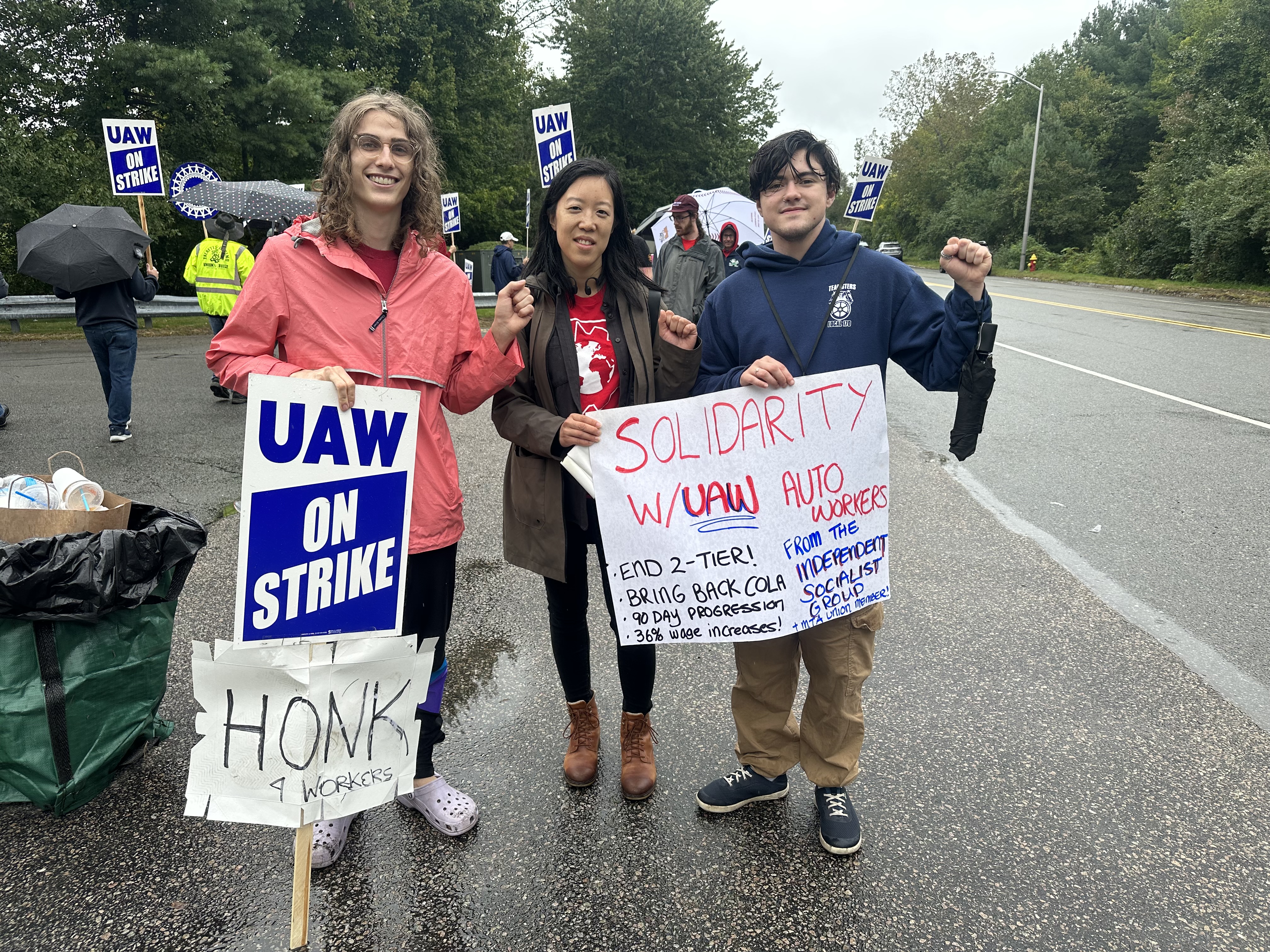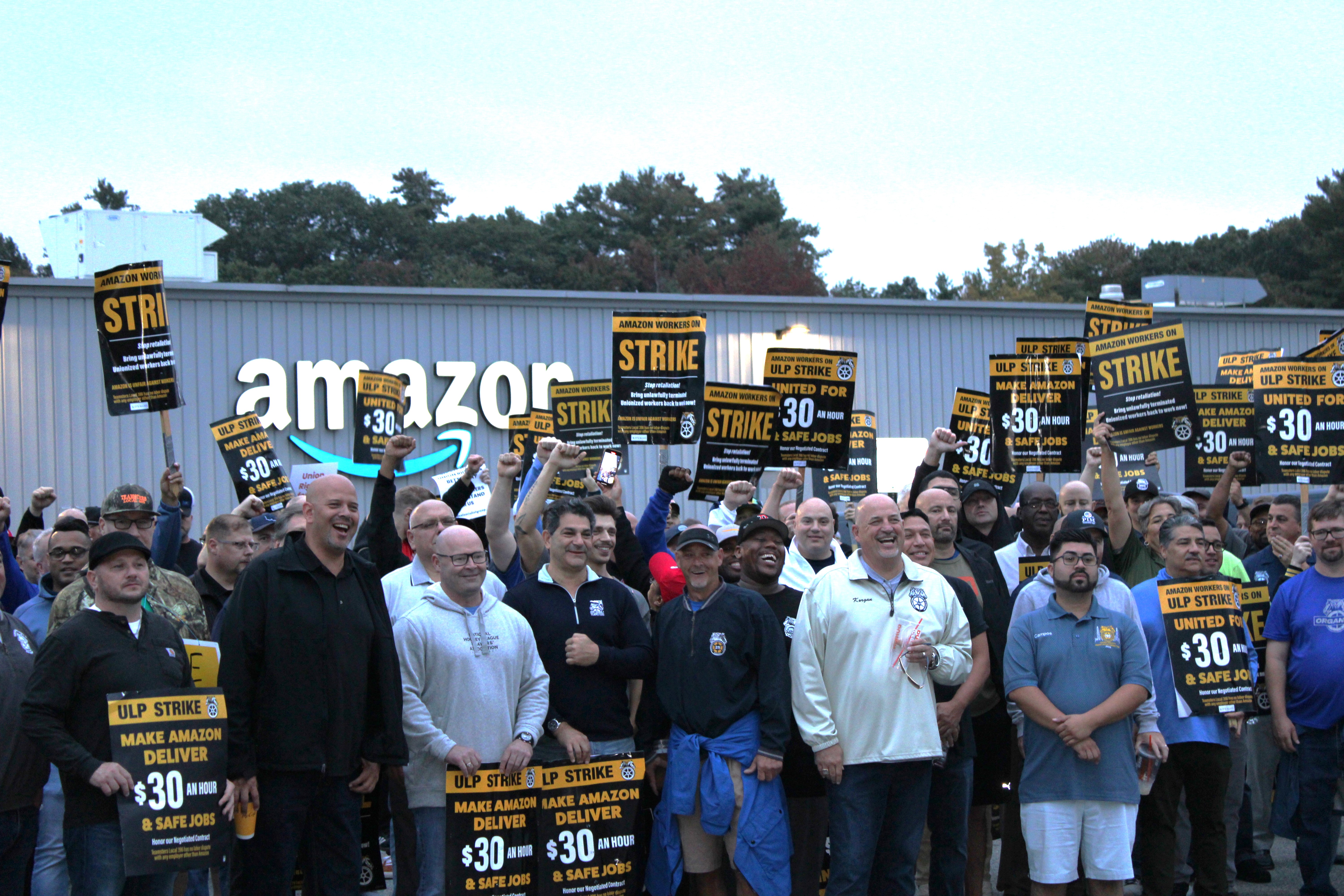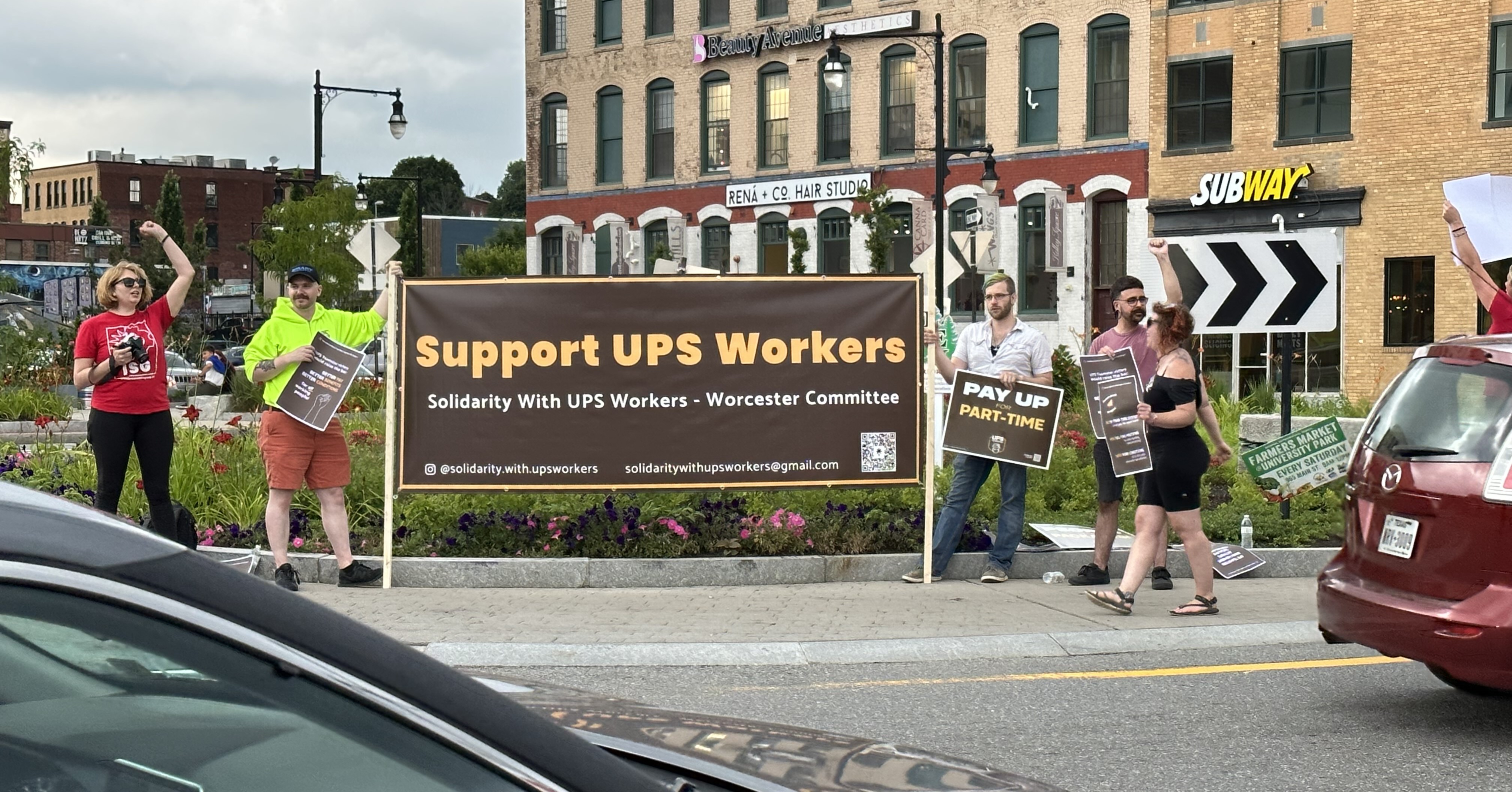by Jeff Booth
Boston, MA
AFSCME Local 3650 (personal capacity)
Four high-profile, important union struggles ended recently. Wages, benefits, and working conditions were improved for hundreds of thousands of workers from the contract campaign at UPS, the UAW strike against all the “Big 3” auto companies, the largest healthcare workers strike in US history led by SEIU-UHW at Kaiser Permanente, and the long-running SAG-AFTRA and WGA strikes in the film industry. These battles showed millions of workers a more active labor movement, on the offensive against big corporations for the first time in decades.








Strikes increased in a wide range of industries, including logistics, manufacturing, and services. In addition to the well-known job actions, there were many other strikes in 2023, including factory workers at Mack Trucks and locomotive manufacturer Wabtec, teachers in LA, Oakland, and Chicago, hotel workers in California, and Starbucks workers continuing to fight union-busting.
As of October, 312 strikes involved at least 453,000 workers. These strikes cost the corporations 7.4 million hours in lost labor, the most in 23 years (Bureau of Labor Statistics). By mid-November, there were 366 labor actions in 616 workplaces (Labor Action Tracker, Cornell University).
The corporate media was forced to pay some attention: “It’s a Record Year for Labor Strikes” (Barron’s), “2023: The Year of the Strike” (Wall Street Journal), and the overused “Summer of Strikes” (USA Today, Fortune, etc.).
The uptick in strikes is a trend of more workers going on strike after a deep decline in strike action over the last four decades. From the mid-1930s through the early 1980s, between 1 to 4 million workers went on strike annually in the US. Annual strike participation fell drastically throughout the 1990s and 2000s, eventually reaching a historic low of 12,500 workers in 2009. Within the last five years, there’s a general trend of more strikes and a higher total number of workers on strike, but the numbers remain low compared to the mid-1930s – early 1980s.
Multiple large strikes in 2023 have attracted new interest in unions, especially from many younger workers wanting to get out of the grind of low pay, long hours, living paycheck to paycheck, and endless debt. “… Gen Z is the most pro-union generation alive today, but also both Gen Zers and Millennials are more pro-union than older generations were at their age.” (Americanprogress.org, August 2023).
The National Labor Relations Board (NLRB) reported a 3% increase in union election petitions in fiscal year 2023, following a 53% boost in election petitions in 2022. The NLRB also revealed an 80% win rate in union elections in 2023, the highest ever recorded at a midyear point. “Labor Unions continue to enjoy high support in the US, with 67% of Americans approving of them” (Gallup’s Annual Work and Education Poll, August 2023).
The bad news is that more workers joining unions didn’t result in a higher percentage of workers in unions. Union density – the rate of union membership – fell to 14.3 million members or 10.1% of the workforce in 2022, the lowest on record. Only one in ten workers are in unions.
There’s no labor law in the US to force corporations to agree to union contracts. Corporations use union-busting tactics, face minimal penalties, and never have to sign a contract. A recent study of unions trying for first contract agreements from 2005-2022 showed increasing delays and “… the average time-to-contract well over a year (465 days). … In 2020-2022, the mean time to contract ratification was over 500 days.” (Bloomberg Law, June 2021 & Americanprogress.org, August 2023). After two years, 43% of newly organized unions don’t have contracts (Economic Policy Institute, May 2023).
The most well-known union organizing campaigns within the last two years occurred at Amazon and Starbucks. Neither the Amazon Labor Union nor Starbucks Workers United (SEIU) have first contracts.
Despite corporate and government forces lined up against union organizing, there’s a chance 2023 will show a net increase in union membership based on the rise in election petitions. In 2024, a huge boost in union organizing is possible if the UAW leadership follows through on their announcement to organize 13 non-union car companies and if the Teamsters step up efforts to organize Amazon.
The UPS Teamster and UAW “Big 3” contract settlements made crucial gains in wages and benefits. ISG members organized solidarity for UPS workers in four cities and walked picket lines with UAW workers (see Launch Meetings: Build Solidarity Committees to Support UPS Workers!). Talking with workers in both unions confirmed pay as low as $15.50/hr for UPS part-timers (over 60% of UPS Teamsters) and $15.78/hr for UAW workers. UPS and auto workers described extremely difficult working conditions, and none of the new contracts substantially improved working conditions.




Both unions’ contract settlements fell short partly due to starting from a weak position (low wages in a high-inflation economy). The extended term of both contracts will not allow for necessary improvements as conditions change (5 years for UPS, vs. 4.5 years for UAW). Teamsters and UAW also missed the opportunity to go on strike together. A joint strike could have helped both unions to fight longer and get better results, including raising base pay, higher raises in general, restoring and increasing pensions, winning better working conditions, and not agreeing to plant closures at Stellantis, etc. See page 12 for further reading about the UAW strike.
A breakthrough for unions would be millions of new workers rapidly organized, unions learning again to use coordinated strike action, and contracts strong enough to set much higher standards for wages, benefits, and working conditions. This will take combining money and other resources of AFL-CIO and other unions and unifying the labor movement through solidarity strike action and workplace occupations. A real breakthrough for unions will also have to be political.
The labor movement needs to lead the way in organizing a workers’ party and stop wasting union resources on propping up the Democratic or Republican parties, which are never on the side of the working class.

